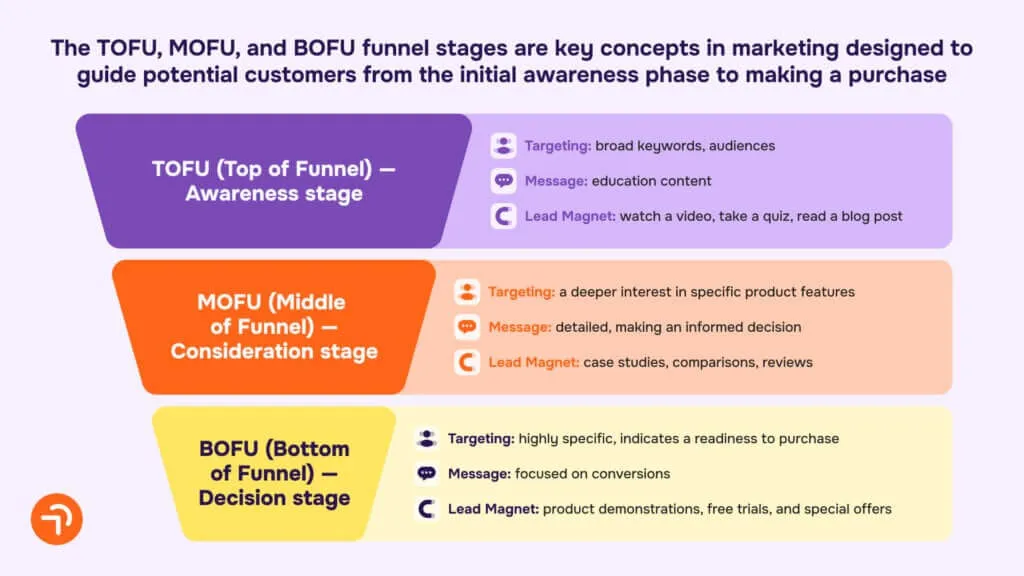Performance Marketing: The Definitive Guide for 2025
Ekaterina Zotkova
July 16, 2024

Our Guide to Performance Marketing covers all key aspects of this highly dynamic and results-oriented mode of digital marketing. It includes everything you need to know as a professional, and more: from key channels to KPIs for your campaigns. We also include unique insights on best practices by top expert voices in the performance marketing field. It’s an absolute must-read!
What is Performance Marketing?
Performance marketing is a type of online marketing, in which marketing partners or affiliates are only compensated for desired outcomes, such as clicks, conversions, downloads, or leads. It’s a very cost-effective method for reaching the objectives of your business, since as an advertiser, you only pay for concrete results.
This mode of marketing aims to boost the performance of your company. In case you work with a performance marketing agency, you get specific results that are tied to your business, and don’t overpay for things you don’t need.
How Is Performance Marketing Different?
Performance Marketing vs. Digital Marketing
While performance marketing and digital marketing can sometimes be used interchangeably by some experts, they serve different purposes. Digital marketing is a broad range of activities, aimed at all steps of the customer journey – from brand awareness to purchase. Performance marketing falls under the umbrella of online marketing, but has a laser-sharp focus on achieving measurable results. These can be quantified with specific metrics, such as cost per conversion (CPC) or return on investment (ROI).
Digital marketing casts a wide net to reach a broader brand awareness employing various methods, such as content marketing, SEO, social media. Performance marketing can include such methods as PPC advertising, influencer and email marketing, search, and so on. But it is strictly conversion-oriented, often using pay-per-click (PPC) and cost-per-action (CPA) metrics to measure the results. This ensures that every dollar spent is accounted for tangible business outcomes.
Both digital and performance marketing rely heavily on data and analytics to track performance and adjust strategies. However, the latter is extremely data-driven due to its rigorous focus on results and optimization for maximum effectiveness.
Performance Marketing vs. Brand Marketing
Both aim at boosting business growth, but reach it in different ways. Brand marketing is definitely a “long game,” that builds emotional connection to your brand through masterful storytelling and connecting with the target audience on various platforms. It raises the value of your brand, strengthens its market position, and customer’s loyalty over time. Performance marketing is highly tactical and uses concrete short-term goals, for example lead generation for SaaS startup.
Benefits of Performance Marketing
In the world of online marketing, performance marketing stands out due to its results-driven orientation and the ability to measure success directly through user interactions. By focusing on concrete performance metrics in the short-term, you can dramatically increase your marketing effectiveness and boost your business results.
Moreover, performance marketing channels, such as search engines, social media, and affiliate networks allow you to target your audience at scale, and thus drive brand awareness up.
Performance marketing also offers lower risk, since you only pay for results, directly tied to your business outcomes. At the same time, it ensures transparency and trackability of the marketing process. Its advanced data-driven optimizations allow you to save your budget and invest in those activities that bring the best results.
Performance Marketing Channels
Search Engine Marketing
Search engine marketing activities provide you with access to highly interested potential buyers via targeted keywords. Paid search ads, like Google and Microsoft (Bing), work on a pay-per-click model, so you only pay when users interact with your ads. PPC campaigns hold an advantageous position in performance marketing, as they allow to almost immediately start getting traffic and conversions.
SEO (Search Engine Optimization) is a long-term effort to optimize your website and blog to get in the first positions in search results on the keywords that are relevant to your business.
Social Media Marketing
Social media networks, such as Facebook, LinkedIn and Instagram, allow marketers to tap into immense audiences online, with advanced targeting and measurement options. A variety of ad formats and trackable metrics make paid social especially well-suited for performance marketing campaigns.
Native Advertising
Native advertising has entered the marketing mix as a powerful alternative to traditional banner ads, primarily due to its ability to blend seamlessly with the surrounding content. These ads don’t look like ads and are less intrusive, which leads to higher engagement.
Sponsored Content
Sponsored content is a form of native advertising and content marketing that involves publishing a sponsored post or video on a website or social media account that publishes similar content. Intriguing stats from Simplelearn show that 70% of Internet users want to learn about products through content versus traditional advertisements.
Email Marketing
Performance marketing focuses on the outcome-based approach to email. It ensures you get quantifiable results such as leads, conversions, and sales from your email marketing efforts.
Affiliate Marketing
Affiliate marketing is a subset of performance marketing. An affiliate marketer promotes for the merchant, with the purpose of increasing traffic, clicks, and sales to the merchant’s website. In this case, the affiliate is only paid commissions for actions taken, such as clicks, conversions, or leads.
Programmatic Marketing
Programmatic marketing is an automated approach for purchasing ad space to reach the most relevant audience at the best possible price. It’s a crucial tool for performance marketing, since it allows you to acquire better placements at scale while increasing your ROI. It also provides in-depth reporting and analysis, which are so crucial to a data-driven approach.
Building a Performance Marketing Strategy
1. Set Your Goals
To start with your performance marketing, establish your strategic goals and specific Key Performance Indicators (KPIs). You can reverse-engineer these from the broader business objectives of your company to ensure that your performance marketing drives tangible outcomes for the business.
Here are our 3 key rules to keep in mind when developing your KPIs:
- Your KPI’s must be tied to your profits. ROAS (Return on Ad Spend) and ROI (Return on Investment) are key metrics. Additional KPIs can include, for example, Number of purchases and CAC (Customer Acquisition Cost), Number of Qualified Leads and Cost per Qualified Lead.
- Your KPIs must be realistic and achievable.
- Your KPIs should reflect the stages of your marketing funnel stages and specific ad campaign goals.

2. Select the Right Channels
Selecting the right channels is essential to reach your audience and deliver desired outcomes. Use data-driven insights to understand where your target audience spends most of their time online and evaluate each performance marketing channel for a potential to reach them. Diversifying your channels to avoid over-reliance on a single platform is a smart approach. But beware spraying your focus and budget inefficiently – only go where you can reach your audience and the desired goals of your campaigns, whether it’s leads, sales, or another specific action.
3. Create Effective Campaigns
So you’ve selected your goals and channels. Now you need to focus on crafting compelling marketing campaigns.
Clear KPIs for each campaign
Use clear, measurable and achievable KPIs to define what success looks like for each campaign and ensure your marketing team is aligned on these.
Campaign Creatives
Another important aspect is to develop creative content that will engage and resonate with your target audience. Keep a close eye on your competitors in this sphere, and learn from their mistakes and successes.
Optimizing Landing Pages
You also need to make sure your landing pages are optimized for conversions. Use A/B testing to compare different versions, allowing you to refine your pages based on concrete data. Our Conversion Rate Optimization (CRO) expert has shared 7 common mistakes that are affecting your conversions – check them out, and make sure you avoid these pitfalls.
Optimizing For Mobile
Additionally, ensure both your campaigns and landing pages are mobile-friendly, as nearly 61% of traffic now comes from mobile devices.
Monitor, Measure, and Fine-Tune Your Campaigns
Continuously monitor and fine-tune your campaigns by using data to check their performance. Check the performance of your campaigns against goals and the KPIs that you have set in the beginning. This will ensure that you operate with maximum effectiveness and can adjust strategies when needed.
Retarget and Remarket
You can leverage retargeting strategies to re-engage users who have shown interest in your product, but haven’t converted. Moreover, you can also target your existing customers with remarketing campaigns: we have a great guide on how to remarket using Google Ads.
Performance Marketing Success Cases
Here, we would like to showcase examples from our own agency practice, where smart performance marketing strategies have delivered outstanding success for a variety of businesses.
Mixpanel Increased Leads 164% With LinkedIn Ads
Mixpanel, a top analytics platform, has generated 164% more leads while also decreasing their cost-per-lead by 67% by hiring us to optimize their LinkedIn Ads. To reach these results, our team started with reorganizing the account to be sure we get accurate data, and established the process of campaigns’ performance analysis.
ScraperAPI Boosted MRR 175% with Search
When setting out to work with us, ScraperAPI’s main goal was to increase the number of requests and, as a result, increase their MRR (Monthly Recurring Revenue). Aimers team implemented a comprehensive marketing strategy within the search network, and as a result we’ve increased signups by +74.39%, while requests saw an impressive increase of +404.62%, and MRR got a boost of +175.00%. Read the full success study here.
Uppbeat Acquired 670k New Users with PPC
Uppbeat was a new music platform for YouTubers and content creators that wanted to create a base of regular users. Our team has worked with them for several yeas through growth, medium, and steady profitability stage, generated 674,000 users from PPC advertising and tested 30 countries. You can access the full case here.
Best Performance Marketing Practices for 2025 and Beyond
To equip you with the best performance marketing practices and trends for 2025, we’ve asked top experts in this field to share their insights.
Dan Reardon, Growth Marketing & GTM Consultant, Top Performance Marketing Voice on LinkedIn
“Reflecting on trends so far in 2025, here are some I’ve observed:
Audience Targeting is becoming much more automated across digital ad platforms. A couple of years ago, I saw breakthroughs by building out custom affinity audiences and other ways to reach target audiences. Now, Meta and Google want to leverage their AI to do it for us. Performance marketers are becoming comfortable letting go of micro-targeting levers.
Creative is easier to scale, allowing for more campaigns in display and video channels. This is due to new GenAI tools and functionality, which will only accelerate.
Measurement is imperfect and marketers are more at peace with this. They’re embracing more aggregate measures as cookies are going away. Marketers no longer rely on in-platform attribution alone. Incrementality testing is more common, supplemented by media mix modeling, which is now much more affordable for most marketers who are running ads in more than three channels.”
Andrew Sanderson, B2B Marketing Consultant at Ansaco Marketing Consulting, Author of “B2B Marketing Processes” Newsletter
“Best practices for Performance Marketing for 2025 and onwards:
A response rate is feedback from the marketplace: it tells you how whether your target audience thinks your message is relevant. In the same way, the KPI you choose to measure the performance of your marketing – Cost per Click, Lead or Acquisition – also reflects that relevance.
To reduce the cost and maximize the effectiveness of your budget, it’s essential to get three things in place.
The first is your target group; the second is your message. Those are both obvious.
Less obvious is that they have to be tightly co-ordinated. There’s no point having a broad message for a focused target group. Or a laser-tight message for a wide audience.
Constant repetition and testing will enable you to refine both the target group and the message and find the sweet spot.
Go for it.”
Dennis Lazard, CEO of ESA Digital, Award-Winning SEO and Growth Agency
“Performance marketing strategy always involves understanding where you are currently and where you aim to be.
The American Marketing Association (AMA) suggests two frameworks: the Tree of Life and the Customer Value Journey. I have combined these into what I call the Customer Value Tree (CVT). Basically, it merges two pillars – proof of concept and product-market fit – with a foundation of user experience (UX), a trunk representing a predictable acquisition channel (PAC), and a crown representing the classic Customer Value Journey, which includes stages such as awareness, engagement, subscription, conversion, excitement, ascending, advocating and promoting.
For example, if you have issues with product-market fit – not knowing your right customer, right product, right market, right offer, right positioning, and right value/pricing – you are not ready for scale or growth. You must first fix this by conducting customer development (CustDev) interviews, then change the UX of your product or service and work on the hypotheses of your predictable acquisition channels.
When you achieve a consistent flow of leads and clients and your Customer Acquisition Cost (CAC) is higher than your Lifetime Value (LTV), you should focus not on awareness channels and their conversions but rather on the excitement stage with the product/service and recurring payments to increase the LTV. This is much easier to optimize than the Top of the Funnel (TOFU).
In any case, I recommend learning the theory and basics first before moving to practice. It always pays off.”
Takeaways:
So here are the main takeaways that you can take with you from this definitive guide to performance marketing in 2025:
- Performance marketing is a results-driven mode of marketing you pay only for desired outcomes, such as clicks, conversions, or leads.
- Performance marketing is different from brand or digital marketing in general, and focuses on measurable results and concrete outcomes, such as ROI or CPC.
- Benefits of performance marketing are lower risk, transparency, and trackability. It allows you to save budget and invest in activities that bring the best results.
- Key performance marketing channels include search engine marketing, social media marketing, native advertising, sponsored content, email marketing, and affiliate marketing.
- Building a performance marketing strategy involves setting goals, selecting the right channels, creating effective campaigns, as well as continuously monitoring and optimizing your campaigns.
Hiring Aimers for Your Performance Marketing
- Check our services offering to see how we can help you reach the desired business outcomes on a variety of performance marketing channels.
- Browse through our clients’ success cases, where we’ve delivered tangible results for companies just like yours.
- Drop a line to our team if you have any questions regarding your performance marketing or cooperation with us.







.png)


.png)
